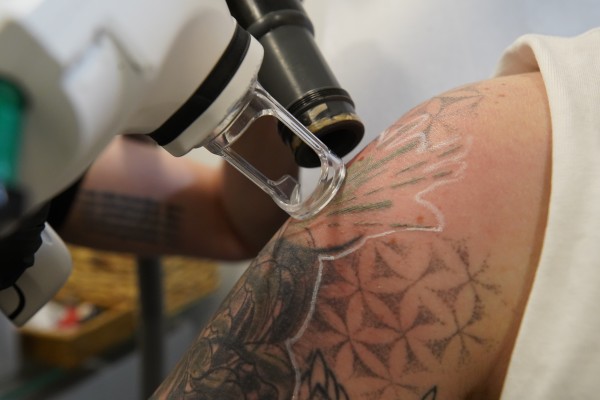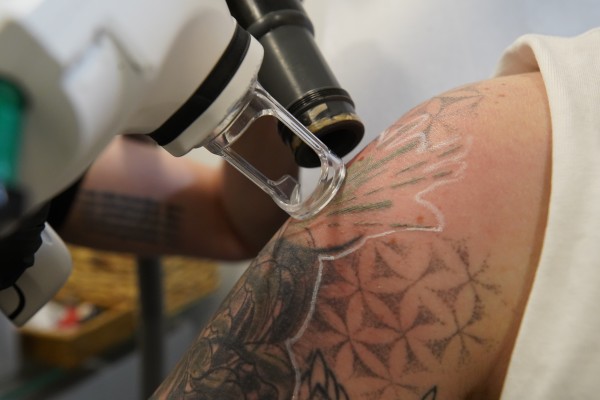Rejuvi tattoo removal is a unique method that combines chemical extraction and natural healing to fade unwanted tattoos. Unlike laser removal, Rejuvi uses a specially formulated cream injected into the skin to bond with tattoo ink and push it out of the skin surface during the natural healing process. While it's promoted as less invasive and more effective for certain pigments, this method carries its own set of potential side effects. Understanding these risks is essential for anyone considering this treatment.
Initial Skin Reactions:
One of the most common Side effects of Rejuvi tattoo removal (الآثار الجانبية لإزالة الوشم ريجوفي) is an initial skin reaction. This may include redness, swelling, and irritation at the treated site. These effects usually appear within the first few hours post-treatment and can persist for several days. While they often resemble the typical response to skin trauma, the reaction is more intense compared to laser treatment due to the chemical nature of the solution used. Proper aftercare, such as keeping the area clean and dry, is vital during this phase to avoid complications.

Risk of Scabbing and Scarring:
Unlike laser tattoo removal, which breaks ink into tiny particles absorbed by the body, Rejuvi draws the pigment out through the surface of the skin. This process often results in scabbing as the body naturally expels the ink. While scabbing is a normal part of healing, it increases the risk of scarring, especially if the scabs are picked at or if the skin becomes infected. In some cases, hypertrophic or keloid scars may form, which can be raised, itchy, and difficult to treat later on. These risks are higher in individuals prone to scarring or those with darker skin tones.
Pigmentation Changes:
Another frequently reported side effect is a change in skin pigmentation. The treatment can lead to either hyperpigmentation (darkening of the skin) or hypopigmentation (lightening of the skin), depending on individual skin response. These pigmentation shifts are more noticeable in darker complexions and may be temporary or permanent. The use of sun protection before and after treatment is often recommended to minimize this risk. However, even with proper care, uneven skin tone may persist, which can be distressing for patients concerned about cosmetic results.
Infection and Allergic Reactions:
Any procedure that breaks the skin carries the risk of infection, and Rejuvi tattoo removal is no exception. Since the process involves injecting a chemical compound into the dermis, it opens the possibility for bacterial contamination if the area isn’t properly sterilized or cared for post-treatment. Signs of infection include increasing redness, pus, swelling, warmth, and pain. In rare cases, allergic reactions to the ingredients in the Rejuvi formula can also occur, presenting as rashes, hives, or itching. These reactions should be addressed promptly to avoid further complications.
Delayed Healing and Skin Sensitivity:
Rejuvi tattoo removal often leads to a longer healing period compared to laser treatments. While some individuals may recover in a few weeks, others report prolonged sensitivity, redness, and discomfort lasting several months. The healing timeline is influenced by factors such as the size and location of the tattoo, skin type, and individual immune response. Repeated sessions can compound these effects, potentially leading to chronic skin sensitivity in the treated area. Adhering to strict aftercare guidelines is crucial to support the skin’s recovery and reduce discomfort.
Emotional and Psychological Impact:
The physical side effects of Rejuvi tattoo removal can sometimes lead to emotional distress. Expectations for quick and flawless results may not always align with reality, especially if scarring or pigmentation issues occur. Additionally, visible side effects can lead to self-consciousness or regret. It's important for individuals to be fully informed and mentally prepared for the healing process and the potential outcomes. Clear communication, realistic expectations, and self-care during recovery can help mitigate these emotional challenges.
Conclusion:
Rejuvi tattoo removal offers a promising alternative for those looking to fade or eliminate unwanted tattoos. However, like any cosmetic procedure, it carries a range of potential side effects. From temporary skin reactions like redness and swelling to more serious risks such as scarring, pigmentation changes, and infection, it is crucial for individuals to fully understand the implications before undergoing treatment. Careful adherence to aftercare guidelines, coupled with realistic expectations, can help minimize complications and promote effective healing. Always consult a professional to assess individual suitability for Rejuvi tattoo removal, ensuring the best possible outcome while managing any risks involved.

